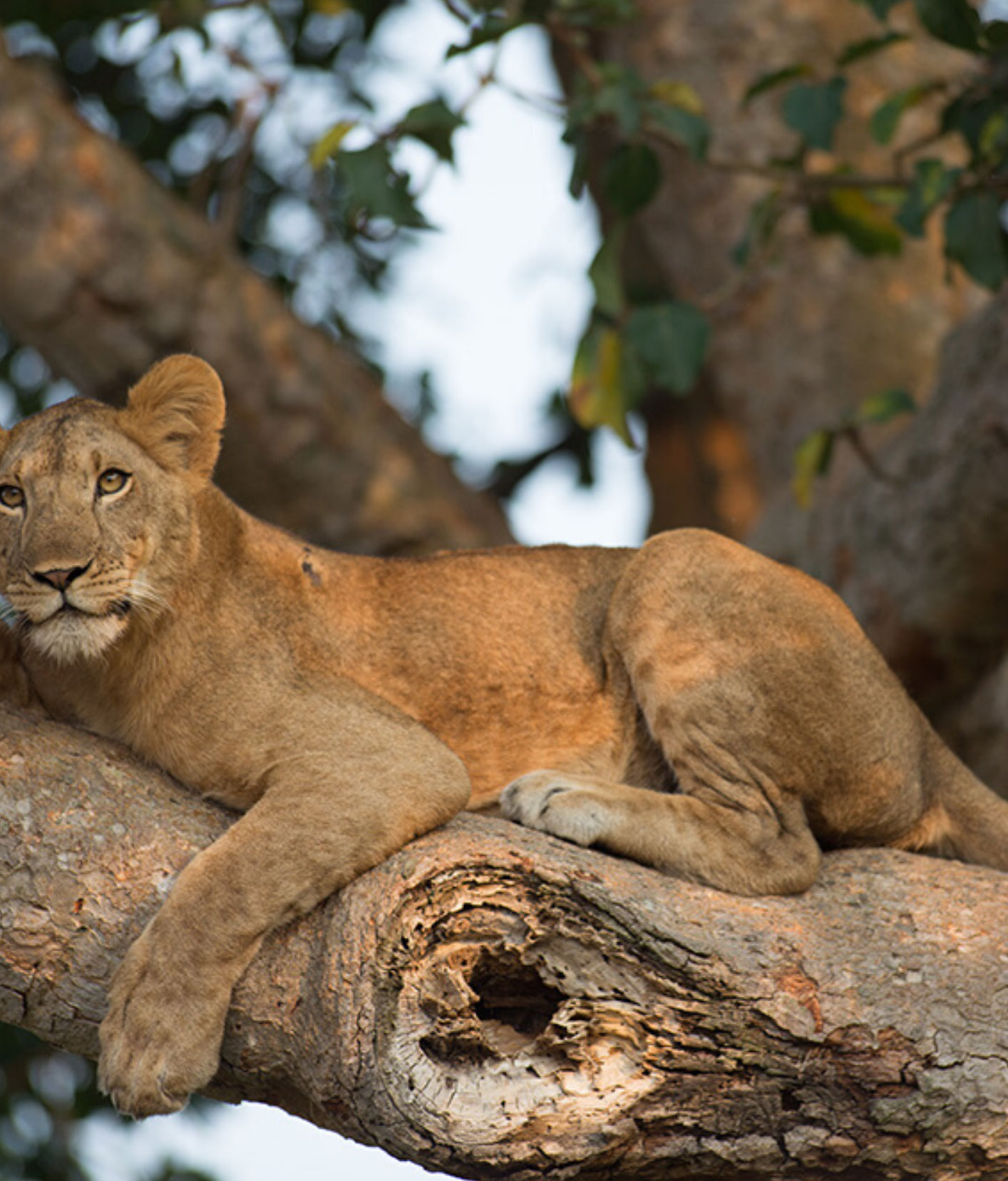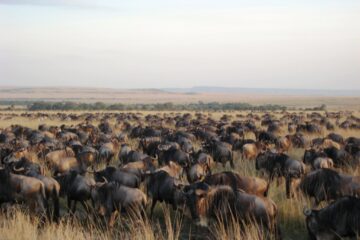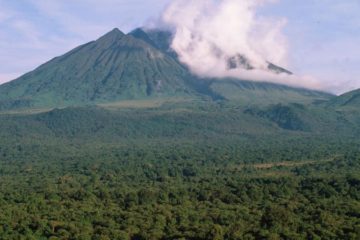Queen Elizabeth National Park – The medley of wonders
Queen Elizabeth national park is the most visited park in Uganda and it has a lot to offer for wildlife lovers. There’s a variety of ecosystems including savannah plains, tropical forests, wetlands, lakes and water channels, thus the park boasts rich wildlife with 95 mammals and over 600 species of birds. Mammals like elephants, lion, leopard, buffalo, Uganda kob, white tailed mongoose, topi, warthogs, are found in the park. However, the highlight of the park is the tree climbing lions in Ishasha wilderness in the south of the park.
The park is also the best place for bird watching in East Africa and it has over 600 species of birds including shoebill stork, swamp purple hen, African fish eagle, and malachite kingfisher. The Kazinga channel a 40 km water channel which connects lakes George and Edward boasts highest concentration of hippos, Nile crocodiles, water birds. During boat cruise safaris along the banks of the channel also expect to see mammals which come to drink water such as elephants, buffaloes and waterbucks.
The park also boasts scenic beauty which includes breathtaking rift valleys, many volcanic crater lakes, rolling savannah grassland plains set against the stunning backdrop of snowcapped Ruwenzori Mountains. The rift valley tropical forests, both Kyambura gorge, Kalinzu and maramagambo are home to chimpanzees and provides opportunities for chimpanzee tracking and nature walks in the park.
Tree climbing lions in Uganda, what you did not know
Uganda wildlife authority identify about 5 prides of Lions that have a behavior of climbing fig trees in Ishasha wilderness, Queen Elizabeth National Park. This park receives the highest number of visitors in Uganda because of its combination of activities such as game drive safari, boat cruise on Kazinga channel and chimp trekking. Among the big cats, only leopard and jaguar can climb trees efficiently. So why do Ishasha lions climb trees? NatGeo Wild explorer Alexander Braczkowski visited Uganda in 2018 to prove why Ishasha lions climb trees. Firstly, he found that there are stinging insects in Ishasha that fly close to the ground. As a result, lions learn to climb trees where it’s comfortable to relax especially after a kill. Secondary, the lions also climb to the tree branches to get a good view of prey.
These lions climb trees at different times of the day. Between 9am, 11pm, 1pm to 3pm most visitor going through Ishasha spot the lions. However, it’s also true that a number of visitors miss to see them as well. Lions with a behavior of climbing tree have also been reported in two Uganda national parks – Kidepo Valley National Park and Murchison falls national park. Around East Africa, tree climbing lions are also reported in Lake Manyara National Park in Tanzania. It’s not clear if the reasons for Ishasha lions to climb trees are same for lions else in East Africa.
So how do you divide your time in Queen Elizabeth National Park for the best chance to see Ishasha tree climbing lions?
Queen Elizabeth national park is divided into two sectors. They include; Kasenyi area in the north includes Kazinga channel, Mweya peninsular, kyambura gorge, several crater lakes including Lake Katwe where salt mining takes place. Ishasha lies in the south west of the park. most visitors drive through Ishasha from Queen Elizabeth to Bwindi forest or from Bwindi to coming Queen. If just driving through, you may or may see tree climbing lions. However, if you overnight in Ishasha it gives enough time for game drive and high chance to see tree climbing lions. Likewise, when you leave Kasenyi early morning, it gives you enough time for game drives in Ishasha before you continue further southwest.
Lion tracking in Queen Elizabeth National Park
Kasenyi plains has lions that do not climb trees. Although it’s no guarantee to see lions, the Experiential Lion tracking does. Paying for lion tracking allows to go off road (what other visitors are not allowed to do) to look for lions and get close to them for 2 good hours.
How you can help save the tree climbing lions of Ishasha
It’s unfortunate one pride of 11 lions was poisoned in 2018 after attacking livestock in the community. Along with the Uganda Wildlife Authority community conservation programs, National geographic explorer Alexander Braczkowski who had been filming the lions started GoFundMe, a charity that is raising money to compensate local people that loose livestock from predator attack.
Queen Elizabeth National Park can be accessed in two ways, either by road or air transport! Located in far south western part of Kampala, the capital city of Uganda. It is about 420km from Kampala via Mbarara-Bushenyi highway thus making it a 7-8 hours drive.






Tour Reviews
There are no reviews yet.
Leave a Review